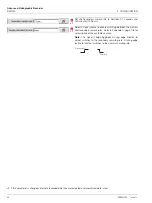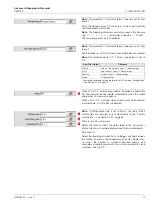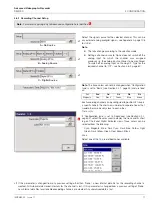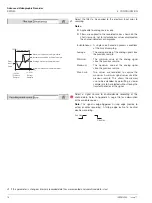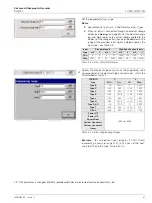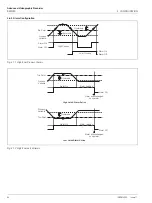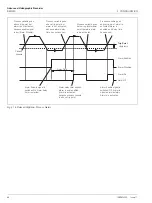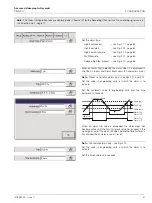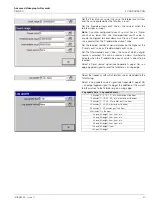
Advanced Videographic Recorder
SM2000
4 CONFIGURATION
80
IM/SM2000
Issue 11
4.6.2 Analog Input Configuration
•1
If this parameter is changed, internally recorded data files are recreated and unarchived data is lost.
Note.
The 'Analog I/P' tab is displayed only if 'Source ID' for the Recording Channel is set to an analog signal source – see
Section 4.6.1, page 77.
If an analog input is assigned to more than one recording channel, changes to any of its parameters and tags are applied to
each channel the input is assigned to.
If an analog input is already assigned to another channel, the edit keys (
) are not available.
Select the electrical characteristics of the input.
Note.
Simulated input types are available for evaluating
instrument features without the need for process
connections.
If 'Volt free digital input' is selected, the input channel
becomes a digital input channel – see Section 4.6.3,
page 83.
Select 'Off' to disable an analog input.
Warning.
Ensure that the appropriate electrical connections have
been made – see Section 5.4, page 104.
When 'Type' is set to 'Volts', input signals with voltages
greater than 2V (standard inputs) or 1V (high specification
inputs)
must
be connected through an external voltage
divider (part no. GR2000/0375) – see Section 5.4.1,
page 104.
Input signals with voltages up to 2V (2000mV – standard
inputs) or 1V (1000mV – high specification inputs) may be
measured without the need for the voltage divider by
setting 'Type' to 'millivolts'.
An external 10
Ω
shunt resistor is required for current
ranges – see Section 5.4.1, page 104.
Select the linearizer type and the units used to condition the
input signal before it is sampled.
Note.
For thermocouple applications using an external fixed cold
junction, set 'Type' to 'millivolts' and select the appropriate
linearizer type.
Linearizer units are displayed only if a temperature
linearizer type (Thermocouple or RTD) is selected.
•1
If this parameter is changed to or from 'Volt free digital input', internally recorded data files are recreated and unarchived data is
lost.
1

